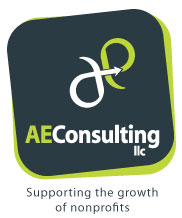In Part 1 of our series we discussed the importance of having an online presence to cater to the increasing number of consumers who are using the Internet to research products and services. We explained that a website is the most common form of online presence and your ideal (and more expensive) option is to invest in a web developer to design and develop your site. If you are on a tight budget and cannot afford a professionally developed website at this time, your next option is to build it yourself.
How to build your own website step-by-step:
1. Obtain a domain name – The domain name is what people type into their address bar to get to your site (www.ae-consulting.net). Picking a domain identical to your company’s name is ideal, but due to limited availability this may not be an option. In this case, find a domain that best reflects what your company offers (Learn more about choosing a domain name).
2. Find a web host – In order for people to access your website, you must have a web host. A web host is a company that leases space on a server where people can publish their websites. There are tons of web hosts out there so do your research to find one that meets your needs (Learn more about finding a good web host).
3. Build your website – The website is what people actually see online. When creating your site you have two options: using a template or starting from scratch. Many web hosts offer website builders where you simply choose a design and fill-in the blanks. You can also purchase templates online. If you plan on building your site from the ground up, you will need to know HTML, the language of web pages (Learn about HTML). Remember to follow basic design principles and web usability strategies to enhance user experience.
4. Managing your content – Your site content includes text, images, and multimedia. Make sure all content has a purpose, whether it is to inform customers about your company or answer any potential questions they may have (Learn about the copywriting process). Also, ensure your content doesn’t contain “too good to be true” words (Learn about copy mistakes). It is also important to keep your site updated with new content so visitors have a reason to check back.
Building your own website takes time and can be an overwhelming process. What do you find to be most intimidating when considering building your own website? This concludes part 2 of our series. Next, we will be discussing your third alternative if hiring a web designer and building your own website is currently not an option for your business.
Tuesday, April 27, 2010
Subscribe to:
Post Comments (Atom)





No comments:
Post a Comment
Note: Only a member of this blog may post a comment.